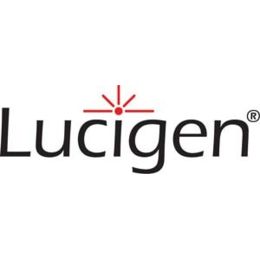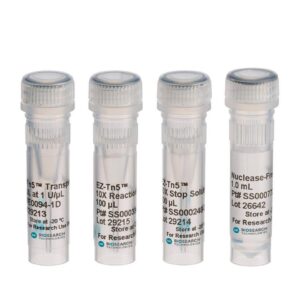
Generate random gene knockouts in living bacteria
- Generate mutants with improved genetics or function across a broad host range of bacterial cell types
- Characterize novel genes and gene functions
- Identify genes involved in pathogenesis, toxicity, biofilm development
- Unravel metabolic pathways
- Identify essential genes and regulatory elements
- 100’s of citations for many different applications
| Name | SKU | Size | Availability | Vendor | Price | Order | |
| EZ-Tn5™ |
TSM99K2 | 10 Rxns | Generally 1-2 weeks from receipt of order | LGC Biosearch Technologies - Lucigen (Epicentre) | Log in for pricing |
Applications
EZ-Tn5™ Transposome™ complexes are formed between an EZ-Tn5™ Transposon and EZ-Tn5™ Transposase, and provide a simple and reliable method for generating a library of random gene knockouts in vivo.* Just electroporate the EZ-Tn5 Transposome into any of a broad range of living bacterial cells and select for a marker encoded by the EZ-Tn5 Transposon (Fig. 1). Because there is no need for cell conjugation, suicide vectors, or specific host factors, EZ-Tn5 Transposomes are ideal for creating mutants in species that have poorly described genetic systems or lack adequate molecular tools. Ready-to-use EZ-Tn5 Transposomes* are available containing a kanamycin selectable marker (<KAN-2>). This marker is readily expressed in many Gram-negative bacteria. You can also create your own EZ-Tn5 Transposome using one of the EZ-Tn5 pMOD™ Transposon Construction Vectors and EZ-Tn5 Transposase. |
 |
| Figure 1. The EZ-Tn5™ Transposon insertion site in bacterial DNA can be sequenced directly using genomic DNA isolated using the MasterPure™ Complete DNA Purification Kit and primers homologous to the ends of the transposon. |
All EZ-Tn5 Transposons contain unique primer-binding sites at each end for bidirectional sequencing. Hence, a gene knockout can be sequenced directly using bacterial genomic DNA as template and the primers provided with each Transposome. Transposon insertions made using an EZ-Tn5 <R6Kγori/KAN-2>Tnp Transposome Kit can be rescued and the flanking DNA sequenced.
EZ-Tn5 Transposome-mediated insertions have been made in many different microorganisms, including Acinetobactor, Campylobacter, Escherichia, Mycobacterium, Proteus, Pseudomonas, Saccharomyces, Salmonella, Trypanosoma, Xylella, and others. The number of transposition clones obtained is highly dependent on the transformation efficiency of the host cell (Table 1).
Benefits
- Rapid mutagenesis procedure is simpler and easier to use than chemical mutagenesis.
- More efficient than using mini-transposons with suicide plasmids.
- Broad host range: over 60 species of Gram-negative and Gram-positive bacteria transposed so far.
|
|
||||||||||||||||||||

